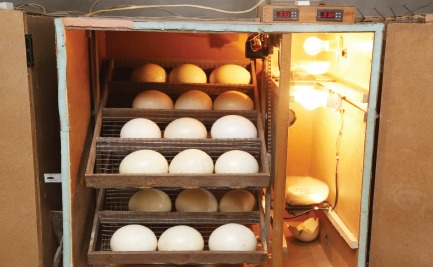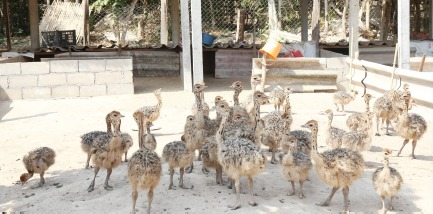KPL
The business of raising ostriches in Laos is steadily growing, emerging as a promising and profitable agricultural sector.

(KPL) The business of raising ostriches in Laos is steadily growing, emerging as a promising and profitable agricultural sector. With their ease of care, rapid growth, long lifespan, and high productivity, ostriches have become an attractive option for farmers seeking lucrative income streams.
One notable success story is Mr. Keosantisuk Saikhamevong, the owner of an ostrich farm in Tham Village, Nasaythong District, Vientiane Capital. Since starting his venture in 2016, Mr. Keosantisuk has transformed his farm into a reliable source of income, generating up to LAK 1.5 billion (approximately USD 80,000) annually for his family.

In a recent interview, Mr. Keosantisuk shared that his decision to raise ostriches was inspired by his passion for agriculture and his expertise in poultry farming. Leveraging his knowledge and experience, he began experimenting with breeding ostriches to establish a sustainable business. Using personal funds, he purchased breeding stock and laid the foundation for what has become a thriving farm.
Today, his farm spans 8 hectares and houses over 180 ostriches. The farm focuses on two species: the red-collared ostrich and the silver-collared ostrich. These birds are considered a valuable economic asset due to their adaptability, long lifespan of up to 65 years, and productive breeding cycle that can last for 44 years. On average, a single female ostrich lays 40-60 eggs annually.

Currently, the farm has 40 breeding females, 20 breeding males, and 120 young ostriches ready for sale. The primary focus is on supplying young birds and meat to restaurants in Vientiane Capital. Annually, the farm can deliver 400-600 breeding birds, meeting the growing demand.
Looking ahead, Mr. Keosantisuk plans to expand the farm’s market by supplying ostrich meat and products to restaurants in hotels across Laos. This will align with the rising demand for high-quality, locally sourced food products in the hospitality sector.
In addition to ostrich farming, the farm cultivates Napier grass and Ischaemum (buffalo grass) as supplementary feed for the birds. This approach ensures a sustainable and balanced farming system while enhancing the health and productivity of the ostriches.
Mr. Keosantisuk’s success highlights the potential of innovative agricultural practices in Laos. His journey serves as a testament to the power of combining passion, expertise, and determination to create profitable and sustainable ventures in the agricultural sector.
KPL